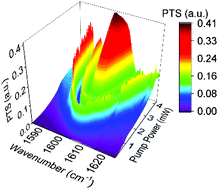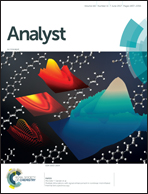Multiple bifurcations with signal enhancement in nonlinear mid-infrared thermal lens spectroscopy
Abstract
We report a novel nonlinear mid-infrared vibrational spectroscopy regime where multiple bifurcations and signal enhancement are observed in the photothermal spectrum of a 6 μm-thick layer of 4-octyl-4′-cyanobiphenyl (8CB) liquid crystal. For increasing pump power values, the nonlinear evolution of the photothermal spectrum is studied in 8CB samples initially in the crystalline and smectic-A phase and their non-equilibrium transitions are characterized with pump–probe thermal lens spectroscopy. The nonlinear photothermal phenomena can be explained by the nucleation of localized non-equilibrium transitions that leads to the formation of bubbles, which modify the thermal lensing behavior. Analysis of the multiple bifurcations reveals a universal critical exponent for these non-equilibrium dynamics that can be linked to mean field theory. We report for the first time simultaneous measurement of the photothermal signal amplitude and phase behavior in the nonlinear regime. Due to the signal enhancement and spectral narrowing observed, nonlinear photothermal behavior shows promise for improvement in sensitivity and signal contrast in mid-infrared, attractive for sample characterization in the mid-infrared.



 Please wait while we load your content...
Please wait while we load your content...